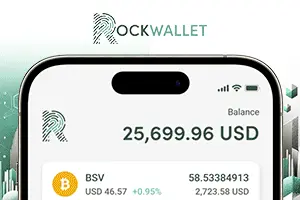|
Getting your Trinity Audio player ready...
|
With the BSV Teranode upgrade rolling out, massively scalable blockchain technology is finally here.
- Teranode is here
- The new internet with BSV
- Fixing the creator economy
- How BSV can transform gaming
- Tech is about to change
Teranode can process 1 million transactions per second with fees of fractions of a cent—enough to process all of Visa’s (NASDAQ: V) annual transactions in just 59 hours.
With this in mind, let’s look at what we can finally build in the era of scalable blockchain technology.
A new internet
While specific applications are interesting, let’s take a step back and focus on the bigger picture. The BSV blockchain enables us to rearchitect the internet into a pay-per-packet model.
Rather than everyone paying a fixed monthly fee regardless of how much data they use, we can now charge micro cents per MB or KB. Slowly, we’d replace ISPs with metered peer-to-peer mesh networks.
Micropayments at scale will allow us to create an ad-free web, too. Publishers will get paid fractions of a cent per page load, image, or video watched. This eliminates ad networks, allowing creators to receive payment instantly with electronic cash.
Machine-to-machine commerce also becomes a real possibility. Every API call could cost fractions of a cent, allowing OpenAI, Google (NASDAQ: GOOGL), Microsoft (NASDAQ: MSFT), and all software developers to charge per action rather than rely on subscriptions.
Next-generation content economy
The last section touched on this, but it’s worth expanding on. The creator economy is broken—with everyone relying on centralized middlemen who control the flow of funds—and scalable, peer-to-peer blockchains can fix that.
Micro and nanopayments allow us to stream payments for media. For example, musicians, journalists, and artists can get paid per second of streamed content. Payments can even be split in real-time, with distribution platforms getting a cut of the action.
Aside from charging per interaction, creators can also get tipped with micropayments. Imagine paying $0.03 every time you post on X or Facebook and then receiving $0.01 for every like, and $0.02 for every share or comment. This is a way for fans and followers to show support for their favorite artists and creators while disincentivizing bot activity.
Micropayments can also empower creators to protect their content from artificial intelligence (AI) models that train on it without their consent. If each piece of content has a digital license attached that requires payment to load or use, then firms like OpenAI will, at the very least, have to pay artists to use their work for model training.
A new financial system
Part of the genius of Satoshi Nakamoto’s original design was that he simultaneously enhanced both transparency and privacy. Public blockchains maintain time-stamped public records of each transaction, but neither the sender nor the receiver is revealed.
A financial system where tokenized stocks, bonds, and even commodities can be transferred directly or via on-chain smart contracts would be revolutionary. It would leave immutable records of transfers and provide clear, undisputable evidence of what happened, when, and which addresses were involved should disputes arise around custody and ownership.Yet, tokenization and peer-to-peer transfers are only part of the picture. Salaries could be paid every day, minute, or second. Purchases could round up to the nearest cent and be invested or donated to charity immediately, with on-chain records to prove it. Even insurance could be paid on a per-use basis.
While there’s still a long way to go, we’re already seeing major players like BlackRock (NASDAQ: BLK), Citi (NASDAQ: C), and the BIS experimenting with scalable digital ledgers.
Gaming and virtual economies
CoinGeek has extensively covered play-to-earn gaming models. This model can empower independent studios, give players and developers new ways to earn, and reintroduce ownership into gaming.
For example, let’s take a hypothetical multiplayer war game. Imagine that each bullet fired costs $0.001, each kill nets players $0.010 from the opposing team’s balance, and in-game items like skins and weapons could have real monetary value on gaming-focused NFT markets.
This can go a lot further with micro-bounties, spectator-driven rewards (think Twitch overlays with tipping), eSports micro-tournaments, and leaderboards with payouts to each position when players fail to beat their best score.
These ideas aren’t just pipe dreams—Haste Arcade has shown that Instant Leaderboard Payouts are possible, and games like Axie Infinity have demonstrated the significant appetite for blockchain-powered games.
The technology has finally caught up with the dreams
Over the past decade, numerous attempts have been made to develop applications based on the above ideas and others.
That said, blockchains like Ethereum and Solana haven’t scaled big enough to make any of this possible. Every time a large wave of enthusiasm for some blockchain concept or idea emerges, the technology hits a wall, and more people become convinced that blockchain tech is hopeless.
However, that’s all about to change. The original Bitcoin protocol has been restored and scaled to one million transactions per second. Teranode separates node functions into microservices, allowing for horizontal scaling with no hypothetical limits. Bitcoin scales on-chain, just like Satoshi said it did.
With this puzzle piece in place, and with stablecoins like MNEE enabling micropayments denominated in USD alongside smart-contracting languages like sCrypt making many different transaction types possible, entrepreneurs and developers can finally build a blockchain-powered world without limits.
For more information on BSV and the tools and tutorials available for developers, visit bsvassociation.org.
Watch: Unbounded Capital Summit teaches value of scalable blockchain

 12-10-2025
12-10-2025 





